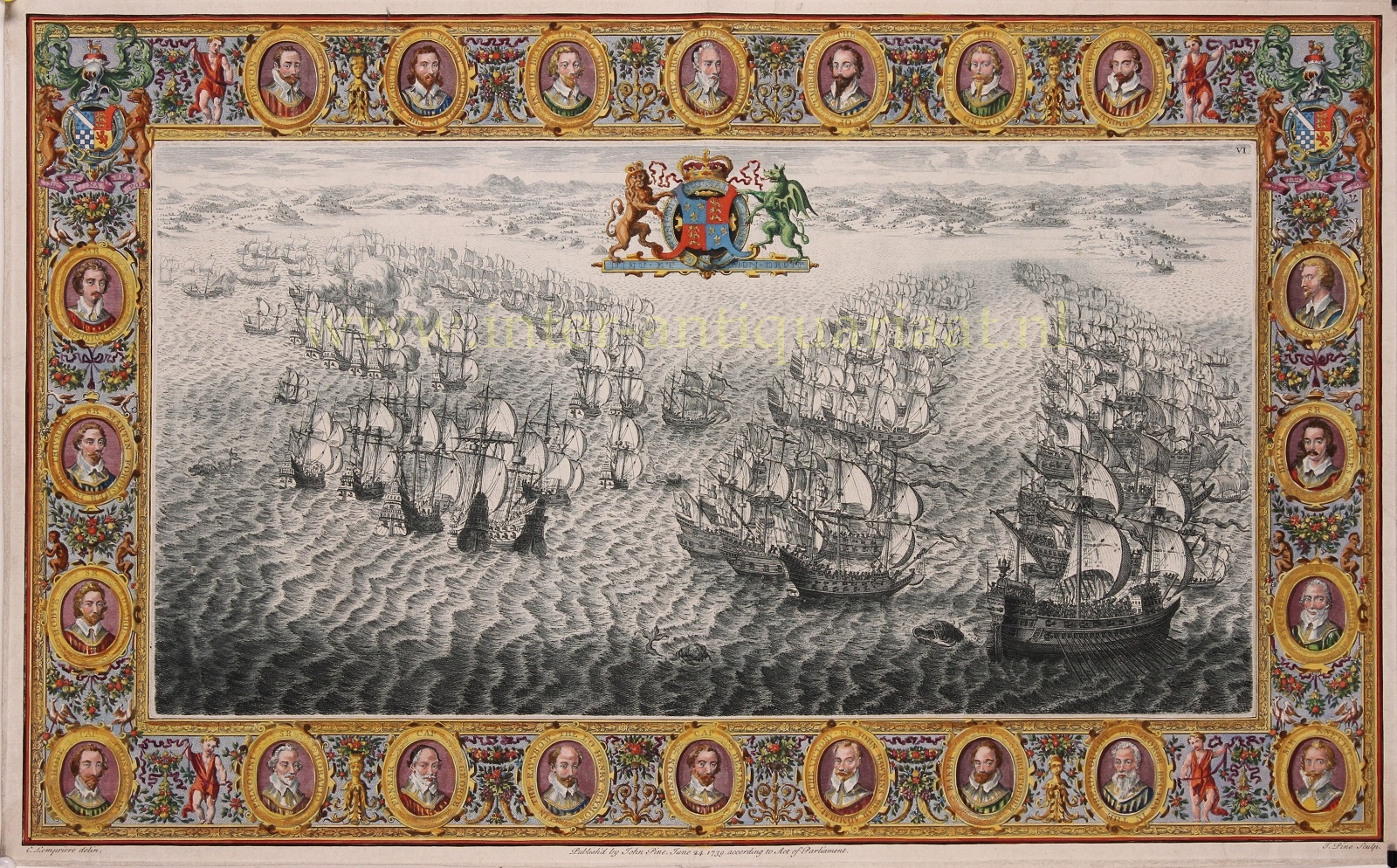SPANISH ARMADA DEFEATED BY THE ENGLISH IN 1588
Copper engraving made in 1739 by John Pine after a drawing by Clement Lemprière for “The Tapestry hangings of the House of Lords: representing the several engagements between the English and Spanish fleets, in the ever memorable year MDLXXXVIII”. Coloured by a later hand. Size (plate): 37,5 x 60,5 cm.
The tapestry to commemorate the defeat of the Spanish armada that served as a model for this engraving, was commissioned by Lord High Admiral Charles Howard of Effingham (1536 1624), who had commanded the Royal Navy against the Armada. The English fleet was presented as a unified naval force acting in unity though it had been a loose group of ships which until then had preyed in a pirate’s role on the Spanish treasure fleet, paid for by the admirals themselves.
The tapestry was woven by Francis Aertsz Spierincx in Delft, after a design by Hendrik Cornelisz Vroom. Vroom, in turn, used a map by Robert Adams from 1588 as a guideline for his work.
We see the English and Spanish fleets in the Channel near the Isle of Portland and Weymouth with the coat of arms of Queen Elizabeth I at the top. The scene is framed in an ornamental border with 22 portraits of commanders of the English fleet. At the top center a portrait of Charles Howard, the Lord High Admiral, with his coat of arms in the corners. The tapestry is meant as English propaganda, the fact that also Dutch have played an important role in the defeat of the Spanish armada is ‘forgotten’.
In 1651 the ten tapestries were hung in House of Lords, which was used for the meetings of the committee of Parliament. They remained there until destroyed in the Burning of Parliament of 1834.
Price: Euro 875,-


